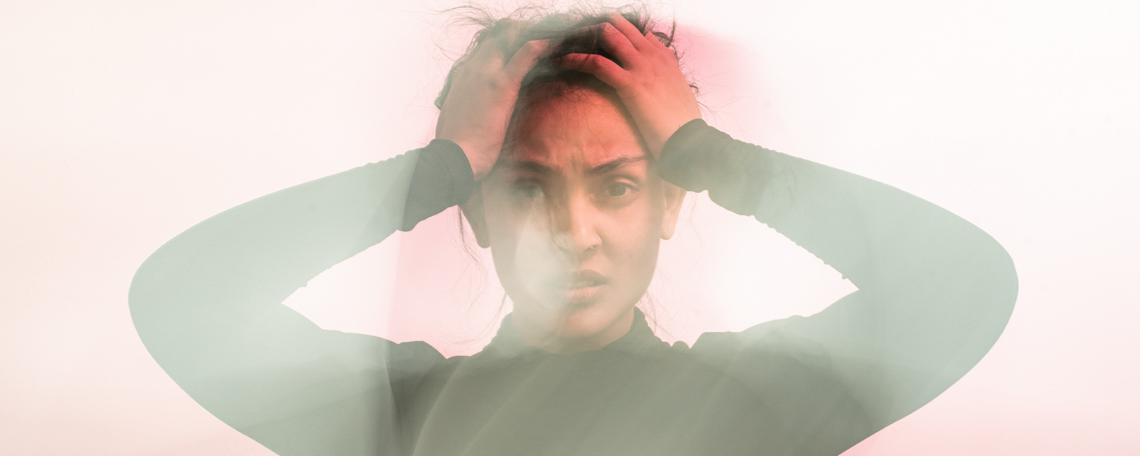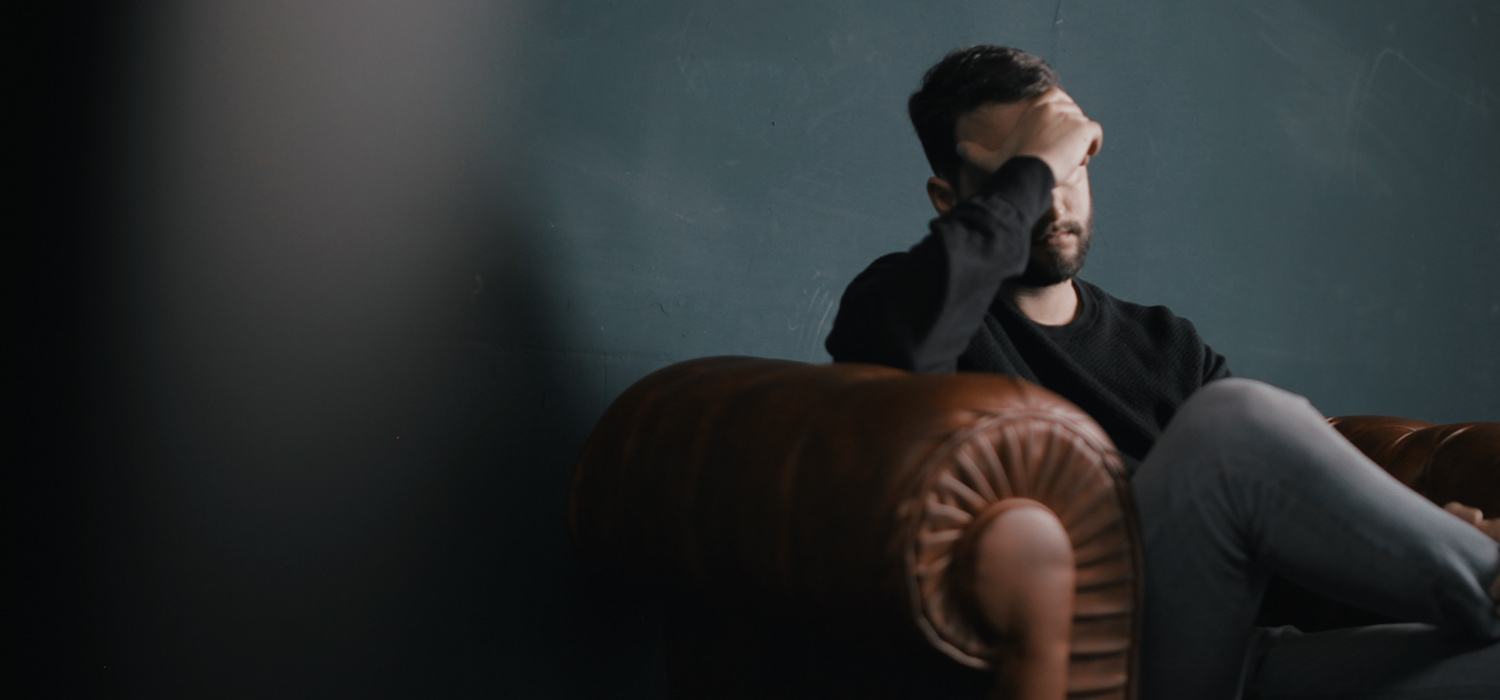
May 8, 2023
Is this the Age of Anxiety or of Anxiety Awareness?

Anna felt a lot of uncertainty about returning to school after the COVID-19 pandemic. Even just thinking of everyday activities, like taking transit or crossing campus to get to her classes on time, brought on stress. Reconnecting with students she hadn’t seen in nearly two years – and becoming “a functioning person again in the real world” – weighed heavily on her.
“Returning to campus brought a lot of anxiety,” says Anna, who is in her fifth year of studying psychology, including three years at the University of Calgary (she requested we only use her first name). During the pandemic, she could study in her bedroom, but returning to campus she’d have to do a lot more socializing and walking, the latter being difficult due to a chronic-pain issue, which didn’t help with her stress.
Anna’s emotional turmoil is far from unique among students.
One recent national online survey of student affairs and mental health professionals at 69 post-secondary Canadian campuses found a 29-per cent increase in anxiety among students accessing mental health counselling on campus since 2018. Depression was the second most common reason students sought help. The survey, conducted by the Mental Health Commission of Canada and the Canadian Association of College and University Student Services (CACUSS), covered the 2020-2021 academic year, which coincided with the second and third waves of the pandemic.
Dr. Robbie Babins-Wagner, PhD’11, CEO of the Calgary Counselling Centre for the past 26 years, is seeing a spike in anxiety, too. The Calgary Counselling Centre sees about 1,200 post-secondary students a year.
Anxiety is “absolutely” at an all-time high, she says, because of a perfect storm of the pandemic and the disruption to young adults’ social connections, so important at this time in their lives. The impact is multiplied by high expectations to maintain grades, an unstable economy and a shortage of jobs.
“Overall, they are feeling more pressure than young people a generation ago,” Babins-Wagner says. “The pandemic affected everybody, and I think it’s going to have a longer life.”
The destabilizing effect of the pandemic, she adds, hit young people hard, seeing parents being laid off, changing jobs or even receiving government support for the first time.
“If a parent or grandparent is anxious, they are likely to have a child…or young adult who is anxious. Anxiety is contagious.”
Anxiety among students is not a new phenomenon by any means, but awareness of just how widespread it has become is. Indeed, UCalgary’s Campus Mental Health Strategy (CMHS) came about due to a noticeable increase in student anxiety in 2014-15, says its director, Dr. Andrew Szeto, PhD.
In addition, there were two pivotal incidents in Calgary that also led to the creation of the CHMS: the murder of five people, three of them UCalgary students, during an end-of-school house party in 2014, and the massive flooding that impacted much of the city in the spring of 2013.
The strategy’s executive summary states that, in the year before completing the study:
- 90 per cent of students expressed feeling overwhelmed.
- 64 per cent felt lonely.
- 58 per cent felt very anxious.
- 67 per cent felt very sad.
“This is something we needed to address … and all things pointed to mental health,” says Szeto, who is also a professor of psychology researching mental health stigmas and post-secondary mental health.

The strategy, launched in late 2015, laid out 28 recommendations within six strategic pillars, such as stigma-reduction and creating awareness about mental health on campus.
In 2020, the pandemic brought on a whole new level of anxiety for university students: a looming uncertainty coupled with little to no social engagement. The resulting increase in student stress was piled on other anxiety contributors, says Dr. Keith Dobson, PhD, faculty professor emeritus in clinical psychology.
“Unpredictability is going to increase anxiety,” Dobson explains. Students typically face these challenges: who will be their dorm-mate, how they’ll afford housing and food, prepping for exams, and forging new relationships, he says.
Kevin Wiens, interim director of Student Wellness Services, adds: “We factor in things like a global pandemic, global conflict that impacts not just our international students but students who have families overseas and it becomes very complex.”
Wiens says it unclear whether there are higher incidents of anxiety or just greater awareness.
“We’re doing a good job in stigma reduction by talking about mental health,” he says. “But we are not sure if the rates of anxiety are higher or is it because people are more aware?”
Anxiety-drivers such as unpredictability and dealing with events that are out of one’s control are things many post-secondary students have dealt with over the past 10 to 20 years, says Dobson, who is not convinced anxiety among students is significantly higher today than in the past. Surveys that rely on self-assessment, for example, frequently have inaccuracies.
Anxiety Awareness
“Self-report studies show anxiety rates are normalizing and returning to pre-pandemic levels,” Dobson adds. “As effects of [the] pandemic become less, we realize that the biggest driver of anxiety was social isolation, not having same level of intimacy and those necessary connections . . ."
He says a major factor in student anxiety, notwithstanding the pandemic and its aftermath, is the simple fact that there’s a lot going on in their lives.
“University life involves a lot of change,” Dobson says. “Along the way, people are also developing intimate relationships. We know university students today are bright, hard-working, motivated and often have very high expectations of themselves – and you pair that with expectations of school and it's a complicated brew.”
Anna’s Story
Anna suffers from chronic pain caused by a congenital foot deformity exacerbated by sports injuries. Two surgeries have not helped alleviate the pain.
“When I am in pain, I’m not the most pleasant person to be around,” she admits. "How do you get in the headspace of developing camaraderie with people? Or, if you have a mis-interaction with someone, then you spend your whole day thinking about that conversation.”
Stressful situations such as these lead to physiological reactions, such as elevated heart rate and rapid breathing and panic episodes. Anna leans on her family and friends, but says she feels guilty about complaining about the same thing over and over again.
After a timely email landed in her inbox, Anna sought counselling through Student Wellness Services, which offers an array of services and resources for international students, Indigenous students, as well as connections to the Women’s Resource Centre, 24/7 help lines, and services for alcohol and substance abuse.
“Hey, take care of yourself,” the email read. “There’s always constant communication coming out of the Wellness Centre about things you can do.”
Anna is one of about 1,000 students per semester who access the on-campus Student Wellness Services. Dobson supports students such as Anna who proactively seek counselling.
“We know post-secondary students in university today are much more attentive to these issues and the number of supports are much better,” he says. “It’s partly up to the student to use those services … it’s a shared responsibility.”
Anna says making students aware of services on campus is crucial. “Letting people know, not just at beginning at of year and exam time, but maybe every two weeks is key. When I was struggling and received that email . . . it made all the difference.”
Anna has also experienced that connection with her professors when she’s needed assignment extensions because of her pain. “[They’ve] always been so empathetic and so kind and it makes me realize you can ask for help and it’s not the end of the world,” she says. Anna is also volunteering to help fellow students in need of support, having become a peer listener with Student Wellness Services, a service she describes as casual and less intimidating for students who would rather talk to a fellow student.
That type of openness about mental health is the goal of the university’s CHMS, says Szeto.
“I would like to see a campus where we are always intentional and thriving … where we support each other. That’s the end goal,” he says.
Though there have been many successes in dealing with mental health issues and the well-being of students on campus, Szeto says there is still work to do. Misinformation about long wait times to get an appointment with a counsellor are not true, he stresses, but bringing mental health and the resources and services to the forefront on campus remains a high priority.
“On our part, we need to get the information out there,” Szeto says. “We can always do better to get there.”
Szeto says the university is in the process of updating the CMHS strategy. Goals include working with Indigenous Elders to reflect the mental health and well-being of Indigenous students on campus.
Ideally, Szeto says the university is striving to integrate mental health techniques into teaching.
“Whether you’re an instructor or staff, you’re going to meet someone who is struggling,” says Szeto. "We should all be equipped to help."
